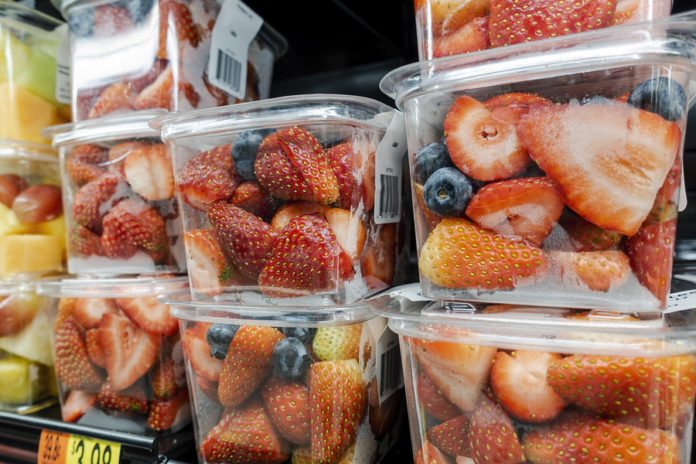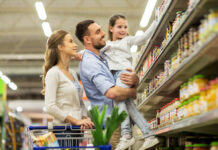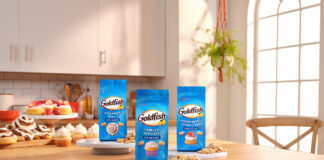
“Packaging is becoming as important as what is in the package for more grocery shoppers,” according to the 2019 Food and Beverage Packaging Trends report from Evergreen Packaging.
Evergreen believes “clean packaging” is the next step after clean label and clean processing. The report suggests food and beverage manufacturers need to make their packaging work harder in four areas:
- Protecting taste, freshness, and nutrients
- Aligning with ingredients
- Packaging responsibly
- Sharing values
Findings cited in the report are from the 2018 EcoFocus Trend Study, which surveyed 4,000 adults online.
Protecting the food
Packaging that doesn’t affect the taste of the contents is extremely or very important to 76% of grocery shoppers buying healthy beverages. Packaging that consumers believe alter the taste of beverages include:
- Steel cans — 51%
- Aluminum cans — 47%
- Plastic bottles — 43%
- Refrigerated cartons — 19%
- Glass bottles — 12%
Also, for 70% of grocery shoppers, it is extremely or very important for packaging to maintain the freshness of a beverage without the use of preservatives in the beverage.
Aligning with ingredients
With the trend toward healthier ingredients, consumers also want healthier packaging. The survey found 71% of grocery shoppers strongly agree or agree healthier foods and beverages should use healthier packaging materials.
Many grocery shoppers have higher expectations of natural and organic products, with 61% of those surveyed strongly agreeing or agreeing companies making those products need to do a better job of using recyclable packaging. Also, 65% of grocery shoppers strongly agree or agree healthy beverage brands need to offer more alternatives to plastic packaging.
Packaging responsibly
Choosing responsibly packaged foods or beverages is extremely or very important to 68% of grocery shoppers. Plus, 51% strongly agree or agree they have changed what they buy because of the type or amount of packaging.
Factors consumers consider include:
- How much packaging does the product use?
- Is the packaging recyclable?
- Does the packaging contain renewable materials?
- Does the packaging use plant-based materials?
Mintel believes bio-based packaging materials will be a key component of future responsible packaging. One example is casein-based biodegradable food wrapping material developed by USDA researchers.
Sharing values
The environmental responsibility interests of many grocery shoppers go much deeper than the package itself and the label information. In addition to environmentally friendly products and packaging, many shoppers expect brands and retailers to demonstrate social responsibility as a company.
The survey found 67% of grocery shoppers strongly agree or agree retailers should choose the products stocked based on the environmental friendliness of both the product and the product’s packaging. Also, 51% of people strongly agree or agree they have avoided purchasing products after learning a company didn’t have socially responsible practices. And 49% have avoided purchasing products from companies after learning that they didn’t have environmentally responsible practices.
Future of food packaging
Not only is consumer demand driving food packaging changes, investors are also demanding companies reduce use of plastic. Some food companies are already on the bandwagon of more sustainable packaging. In July Kraft Heinz announced plans to make 100% of the company’s packaging globally recyclable, reusable, or compostable by 2025.However, moving toward more eco-friendly packaging comes with challenges. Sustainable options can cost about 25% more to produce than traditional packaging, reports Food Dive. Plus, the materials don’t always keep food as fresh as does plastic. Companies have to take into consideration a range of factors when making packaging decisions.







